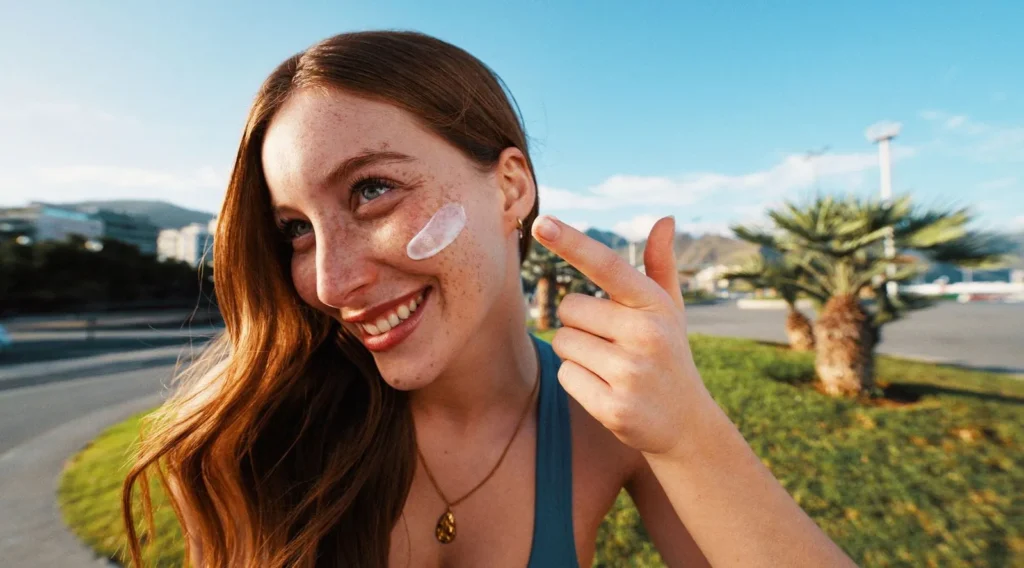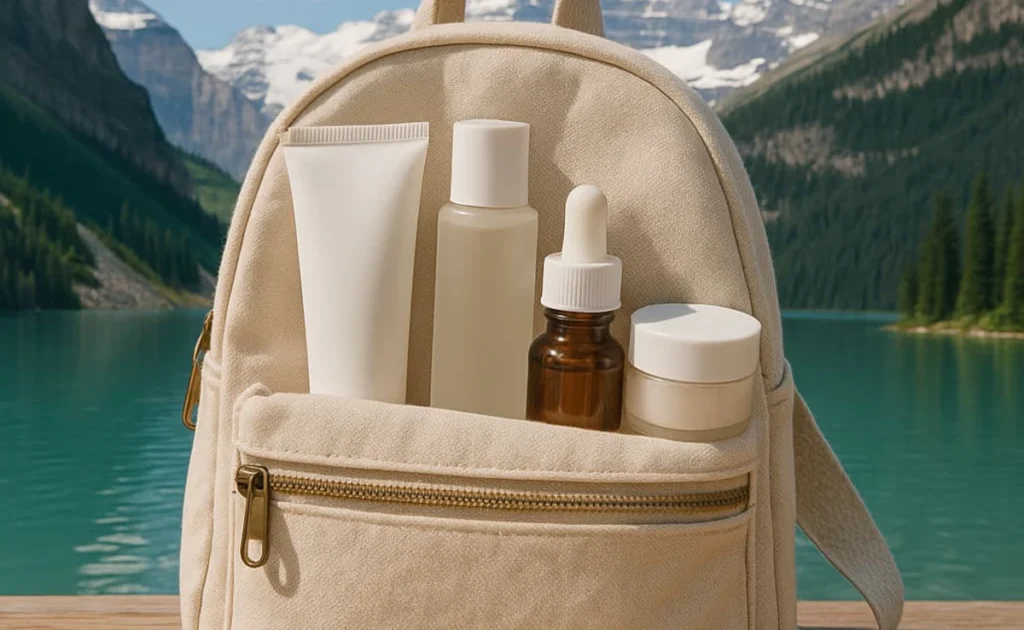Introduction: Why Climate Matters in Skincare
One-size-fits-all doesn’t work when it comes to skincare—especially if you travel often, live in a region with extreme weather, or notice your skin reacts differently throughout the year. Your skin is the body’s largest organ, and it’s highly responsive to external conditions like temperature, humidity, UV levels, and pollution.
This is where climate-smart skincare comes in. Rather than relying on the same routine every season, this approach tailors your regimen to your location and its specific environmental factors. Whether you’re dealing with the dry chill of a northern winter or the sticky heat of a tropical summer, climate-smart products and strategies can protect your skin and keep it glowing year-round.
The Science Behind Climate-Smart Skincare
Your skin changes depending on your environment. Here’s how climate can affect it:
- Cold & Dry Climates: Skin loses moisture more quickly, leading to flakiness, tightness, and even cracking.
- Hot & Humid Climates: Pores are more likely to clog, causing breakouts and oiliness.
- High-Altitude Regions: Thin air and intense UV exposure increase dehydration and sensitivity.
- Urban Areas with Pollution: Airborne toxins can break down collagen and accelerate aging.
Adapting your routine based on these conditions is not just beneficial—it’s essential.
1. Skincare for Cold & Dry Winters

In places like Northern Europe, Canada, or high-altitude cities during winter, the air lacks humidity and temperatures drop drastically. These conditions strip moisture from your skin and weaken the skin barrier.
Winter skincare tips:
- Switch to a hydrating cleanser: Avoid foaming cleansers that can dry out your skin. Use cream or oil-based formulas.
- Layer moisturizers: Start with a hydrating serum (like hyaluronic acid), follow with a rich moisturizer, and seal it with a facial oil if needed.
- Avoid hot water: It may feel soothing, but it dries out the skin even more.
- Use an occlusive at night: Ingredients like petrolatum or shea butter can lock in moisture.
- Don’t skip SPF: UV rays are still present in winter and reflect off snow.
2. Skincare for Hot & Humid Summers

If you live in Southeast Asia, the southern U.S., or the tropics, your skin is constantly exposed to high heat and moisture in the air. This increases oil production, sweat, and the likelihood of clogged pores.
Summer skincare strategy:
- Use a gel-based cleanser: It removes excess oil without stripping your skin.
- Go light on moisturizers: Choose water-based or oil-free formulas.
- Opt for mattifying sunscreen: Look for non-comedogenic, broad-spectrum SPF.
- Exfoliate regularly: Use chemical exfoliants like AHAs/BHAs once or twice a week to prevent congestion.
- Blotting papers are your friend: Keep them in your bag to manage shine throughout the day.
3. Skincare for Dry, Desert Climates
Places like Arizona, Dubai, or inland Australia offer plenty of sun but very little humidity. This combination accelerates dehydration and increases sensitivity.
Desert-friendly skincare tips:
- Hydrate in layers: Mist your face before applying serums and moisturizers to help lock in moisture.
- Use products with humectants and emollients: Glycerin, urea, and squalane are ideal for restoring hydration and barrier support.
- Avoid alcohol-based products: They can be too harsh in arid environments.
- SPF is non-negotiable: Choose a moisturizing sunscreen to get both UV protection and hydration.
- Don’t over-exfoliate: Gentle is better to avoid stripping your already sensitive skin.
4. Skincare in Cold, Wet Coastal Regions

Think London, Seattle, or Ireland—cool weather with constant moisture in the air. The skin may not dry out as fast, but it can feel congested or dull due to pollution and moisture imbalance.
How to handle coastal climates:
- Stick to a gentle exfoliation routine: Remove dead skin cells and revive dull skin without irritation.
- Add antioxidants to your skincare: Vitamin C helps counteract pollution and boost radiance.
- Use lightweight moisturizers: Hydration is key, but avoid anything too heavy that could clog pores.
- Watch for fungal acne triggers: High humidity can increase the risk of breakouts—look for ingredients like niacinamide to manage oil and inflammation.
5. Skincare for High-Altitude Environments
Whether you live in Denver or vacation in the Swiss Alps, higher elevations mean thinner air and stronger sun exposure.
Altitude-aware skincare essentials:
- Boost moisture levels: Use hydrating masks, rich moisturizers, and serums packed with humectants.
- Double up on SPF: High UV index at altitude means sunscreen is a must—even on cloudy days.
- Repair and protect your barrier: Look for ceramides and fatty acids in your creams.
- Avoid active ingredients before going out: Retinol and acids may increase sun sensitivity at high altitudes.
6. Urban Skincare: Pollution-Proof Your Face
If you’re living in a major metropolitan area like New York, Mumbai, or Tokyo, pollution can wreak havoc on your skin.
Skincare for the city:
- Start with a double cleanse: Use oil cleanser first, followed by a gentle foaming wash to remove fine particles.
- Antioxidants are a must: Incorporate ingredients like Vitamin C, E, or green tea to combat free radicals.
- Barrier boosters help: Niacinamide and ceramides strengthen skin’s defenses against toxins.
- Use a skin-protective SPF: Some sunscreens now offer pollution defense features as well.
- Clean your face before bed—always: Don’t let environmental grime sit on your skin overnight.
7. Travel-Smart Skincare Tips

For those constantly on the move—whether flying cross-country or jumping between climate zones—your skin needs flexibility.
Pack this travel-friendly skincare kit:
- Hydrating facial mist
- Miniature SPF
- Gentle cleanser
- Multi-tasking moisturizer
- Lip balm and under-eye cream
- Sheet mask for post-flight hydration
Tip: Stick to a simplified routine while traveling, and adjust based on the new climate as quickly as possible.
Climate-Smart Skincare in Practice
So, how do you bring climate-smart skincare into your everyday life?
Key takeaways:
- Know your environment: Check the humidity, pollution levels, and UV index in your region.
- Listen to your skin: Dry patches, breakouts, or dullness often signal that something needs to change.
- Keep your skincare flexible: Build a core routine but rotate in products based on seasons or travel.
- Use fewer, smarter products: Choose formulations designed to perform under specific environmental stressors.
The ultimate goal of climate-smart skincare is to protect and support your skin’s natural function—whatever the forecast.
Conclusion: Your Skin’s Best Ally Is Adaptability
Your skin is incredibly responsive to its surroundings. When you adjust your routine based on climate and region, you’re not just reacting to issues—you’re preventing them. With climate-smart skincare, your face becomes more resilient, more radiant, and better equipped to face the environment head-on.
This isn’t about chasing trends—it’s about aligning your personal care with where you live, work, and travel. And that’s the smartest move you can make for long-term skin health.
